Longer than yours
Who doesn’t love geeking out over a custom spec wünderbike? Especially when the bike is question is in the vanguard of nu-skool mountain bikes.
Here’s regular mbr photographer and wordsmith Sim Mainey’s new love: his Longer Mojo Nicolai G3 29er…
Mojo Nicolai G13 custom spec
- Frame / GeoMetron G13 (Longer)
- Shock / Fox Float Factory CTD (custom 185mm length), 133mm travel.
- Fork / Fox 34 Performance Elite, 140mm travel
- Drivetrain / SRAM GX Eagle. 175mm crank arm length, 32 tooth.
- Brakes / SRAM Code RSC, 200mm rotors
- Wheels / Chosen 150t hubs, Alex Volar 3.0 rims. milKit tubeless kit.
- Tyres / Specialized Hillbilly/Butcher Grid 29” x 2.35”
- Bar / Truvativ Descendant DH aluminium bar. 800mm, 25mm rise, 5º upsweep, 9ºbacksweep
- Stem / Truvativ Descendant 40mm, 0º rise
- Grips / DMR Deathgrips (Thin/Soft compound)
- Headset / Superstar Components Slackset (-2º)
- Seatpost / RockShox Reverb, 170mm drop
- Saddle / Fabric Line
- Pedals / Nukeproof Horizon Sam Hill
For more information on the thinking behind GeoMetron and to geek out over figures head on over to geometronbikes.co.uk

Words and pics by Sim Mainey
I’m an over-thinker in general but when it comes to putting together a new bike I achieve whole new levels of mental cog-whirring. I spend days fretting over details and minutiae – shock compression tunes, dropper post insertion depths, freehub engagement speed and sound, saddle stack height and tubeless valve longevity all keep me awake at night.
>>> How to increase standover on bikes with high seat tubes
I guess I sweat the small stuff because for the most part the fundamentals of bike design have been pretty much sorted. While every new bike appears to be designed to the mantra of longer, lower and slacker these three changes have lead to some incredibly capable bikes that have made riding more fun. (Side note – I’d actually add steeper to that list, steeper seat angles make for a much better pedalling position. Us humans like these in threes though…).
Geometry is pushing riders on and riders are asking more of their bikes, a virtuous cycle that helps to push things forward. So, geometry is sorted then. Well, sort of.
Chris Porter is to blame
A year or two ago I went to visit Chris Porter (then of Mojo now Mojo Rising) to test ride one of his new GeoMetron bikes. The 160mm travel G16 I rode changed the way I thought about bike geometry. There was a lot going on in my head on the test ride but the three things that really struck me were how fantastic the suspension was (no surprise given Chris’ background), how well it climbed (despite a lot of the initial chatter being about its downhill ability) and that it definitely wasn’t too long. Despite numbers that initially looked off the chart (and compared to a lot of manufacturers they still are) I sat on the bike and realised how well it fitted me. The combination of a steep seat tube, plenty of reach and flawless suspension just made for a bike that was much more all-round capable than you’d imagine if you were purely fixated on the 62.5º headangle.
I was sold on the concept but what I really fancied was 29” wheels, as opposed to the G16’s 27.5” wheels, and a bit less travel. Seems I wasn’t the only one and when the G13 appeared with bigger wheels and 133mm of travel I had it pinned as my next bike. I also liked the fact that, befitting its designers, it left plenty of room for tinkering, fettling and experimentation rather than locking me into any proprietary standards. Big bearings, well thought out external cable routing and beautifully welded aluminium tubes just sweetened the deal.
I could witter on endlessly about this bike but I’ll save it for a captive audience in a pub and highlight four of the more interesting things I’ve speeced on the bike.
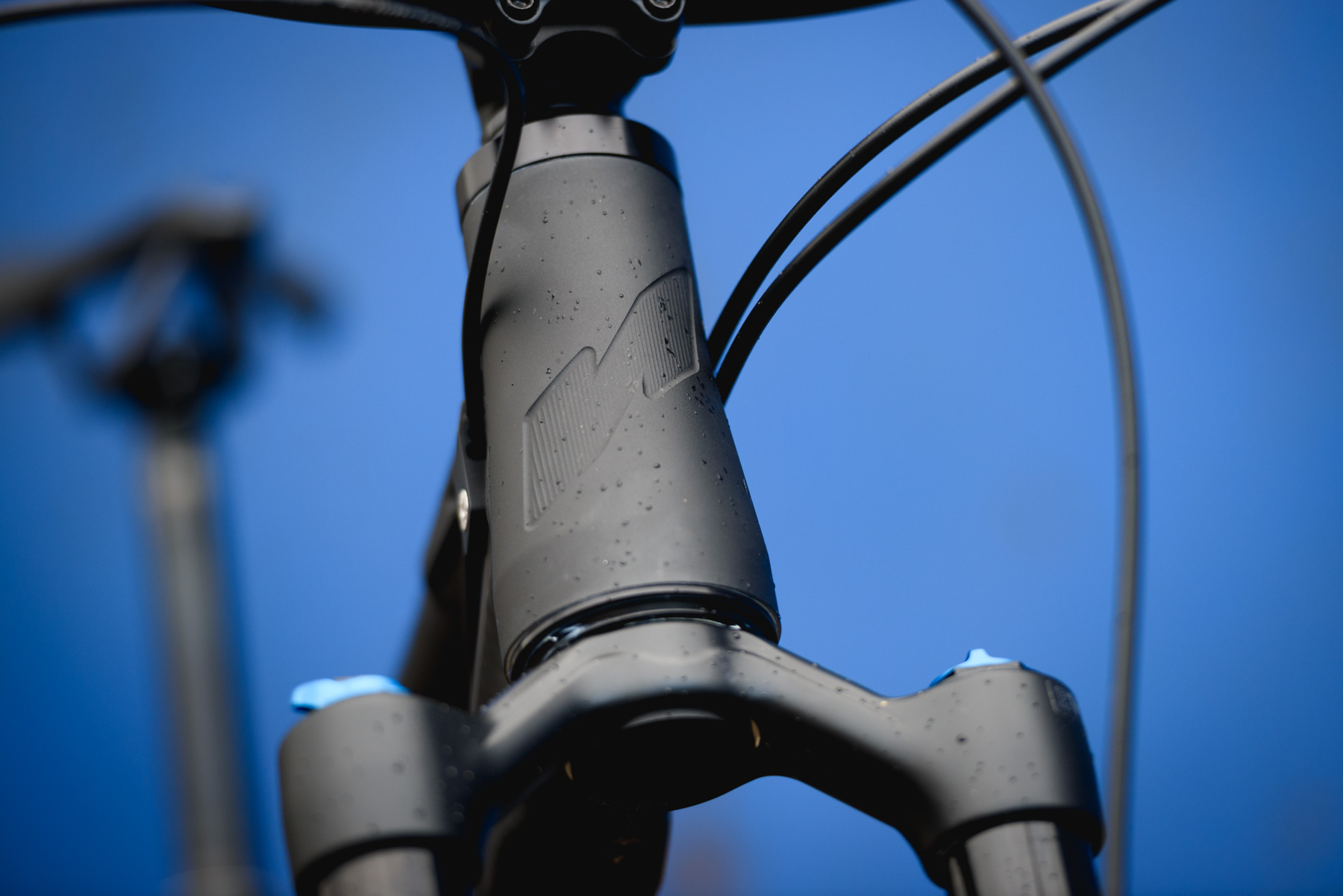
The headset
As standard the G13 with its flip-chip in the ‘low’ position and a 140mm fork has a 64.2º headangle. However, having demoed a G13 with an angle adjust headset fitted that knocked 2º off that figure I figured that would be the way to go. Superstar Component’s Slackset is reasonably priced, made in the UK and available in a -2º option. Fitting took care (and a piece of string and a pencil) to get everything aligned but it went in fine and resulted in a 62.2º headangle – for reference Trek’s World Cup DH ready Session has a 63º headangle. There is a slight flip-flop feel to the steering at low speed but you get used to it and I’d be interested to try a 44mm fork offset, as opposed to the 51mm fitted, to see if that lessens that effect.

The shock
The G13 uses a standard 190mm eye-to-eye shock to meter out its 133mm of travel (although GeoMetron can provide a custom built coil Fox DHX2 shock with 148mm of travel if you like). In the back of the shed I had a Fox Float CTD that Chris had built for a 26” wheeled Orange Five I’d once owned. I’d wanted to make the Five lower and slacker, some things never change it seems. Rather than fit offset shock bushings which decrease the eye-to-eye length but have a habit of twisting, Chris suggested a custom built shock reducing the shocks length to 185mm and tuning the insides to suit.
Without another shock to hand, and curious as to what the bike would be like with another 1º lopped of the headangle, I bolted in the old shock. This, combined with the headset has resulted in a 61.2º headangle, which doesn’t worry me at all. What does give me slight cause for concern is the seat angle getting slacker. One of the things I loved about the G13 I demoed was it’s climbing prowess, partly due to a steep seat angle, so I’ll have to see if the compromise is worth it. And yes, it does bother me that the shock isn’t black.

The seatpost
Proportionally I’m all torso and very little leg so a bike with plenty of reach and a short seat tube suits me perfectly, and now that the RockShox Reverb is available with a 170mm drop I can slam the saddle all the way down on techy descents. This has made more difference to my riding than even I thought it would. With a long 29er sometimes it can feel like you’re getting caught up in the bike but with the saddle well out of the way and plenty of space between the axles I’ve got a huge range of movement within the bike and can get my weight where it needs to be – which on this bike is generally over the front wheel.
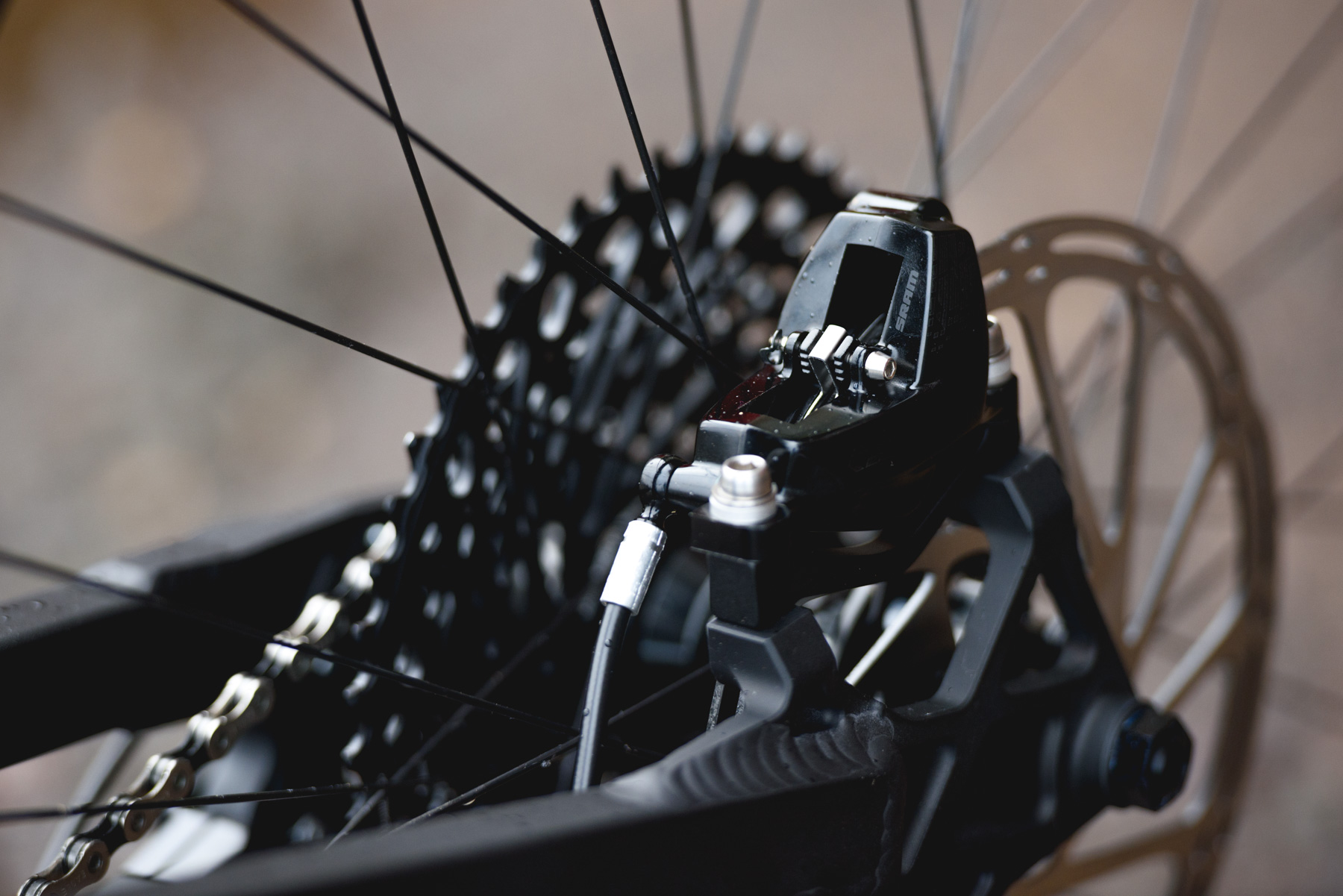
The rotors
Having a larger brake rotor on the front than the rear has become the norm, but recently I’ve been pondering the logic of this. The front brake is always going to be more effective at hauling you up, due to physics stuff, and on a motorbike it makes perfect sense. But when was the last time you relied solely on your front brake to haul you up or control your speed on a greasy downhill? Chances are it didn’t end well. Mountain bikers rely primarily on the rear brake to not just slow us down but to adjust the rear end for turning. So why run a smaller disc on the brake that is doing most of the work?
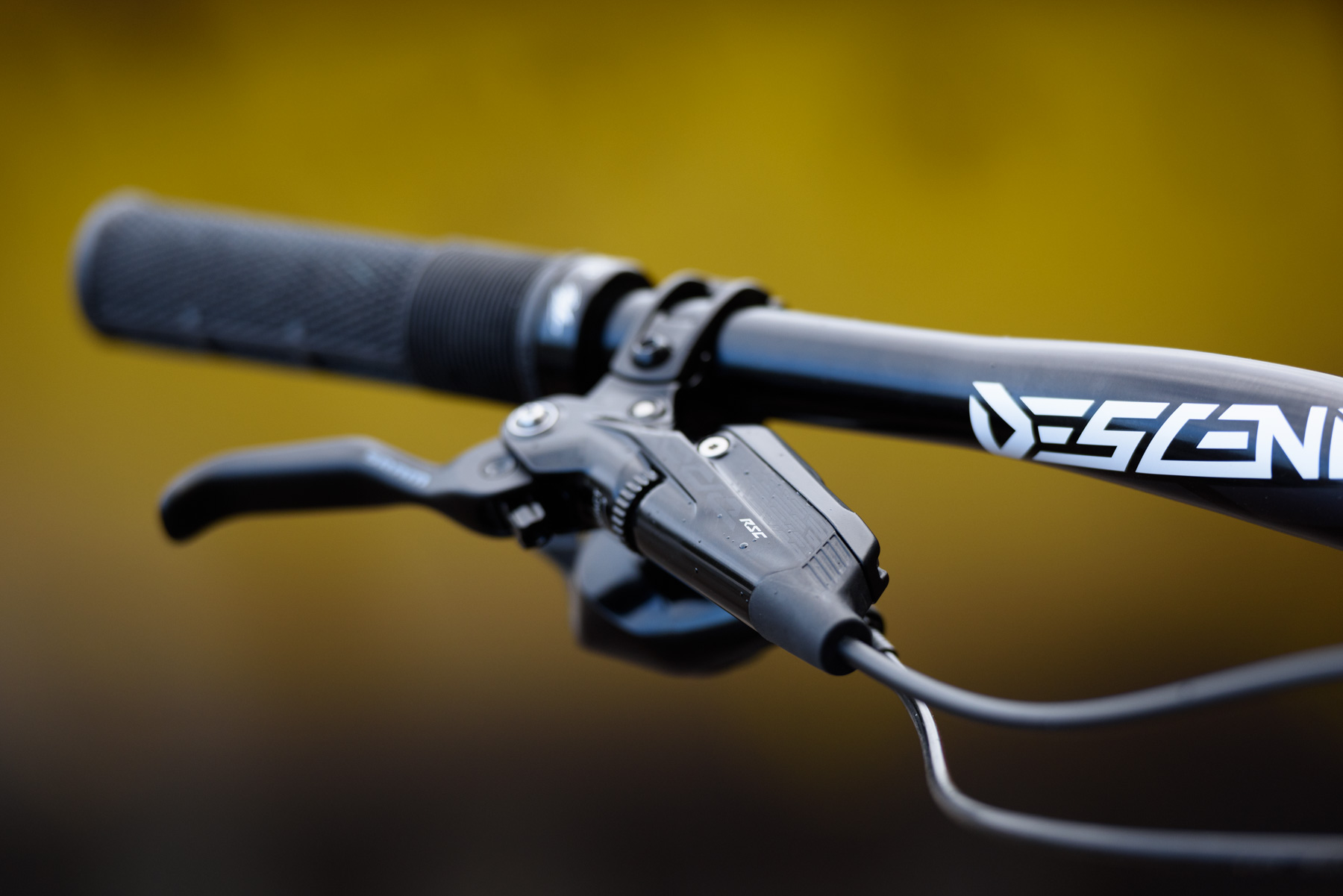
SRAM’s Code brakes are stonking stoppers with four-pot calipers offering plenty of bite and tons of modulation, but even so I’ve teamed them up with 200mm rotors front and rear for increased power and control. The G13 is a big bike and I more often than not ride with a heavy camera pack on, so packing a few extra grams into some bigger rotors and having utter confidence in my ability to not run out of braking power seems like a good idea.
Moar pix
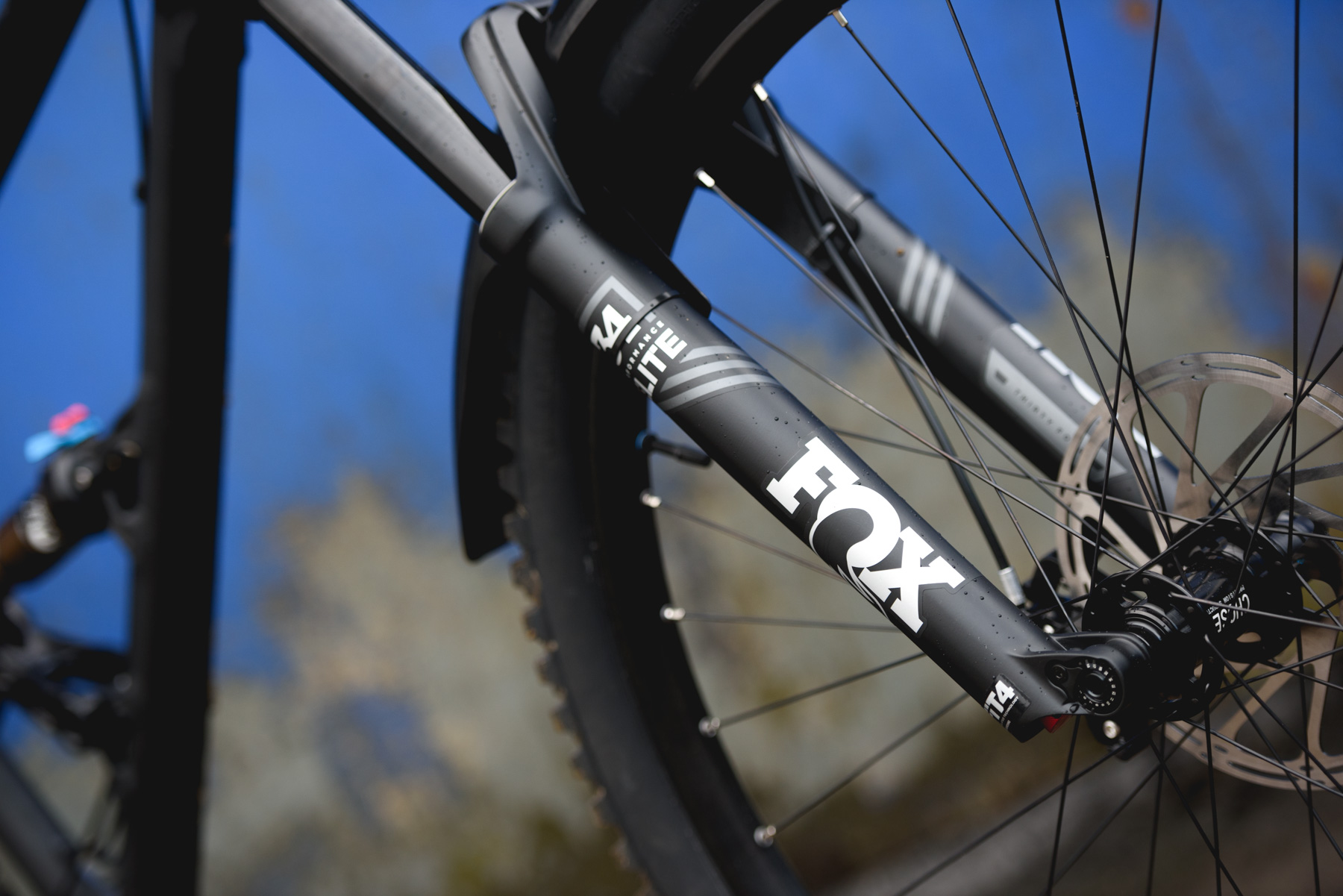
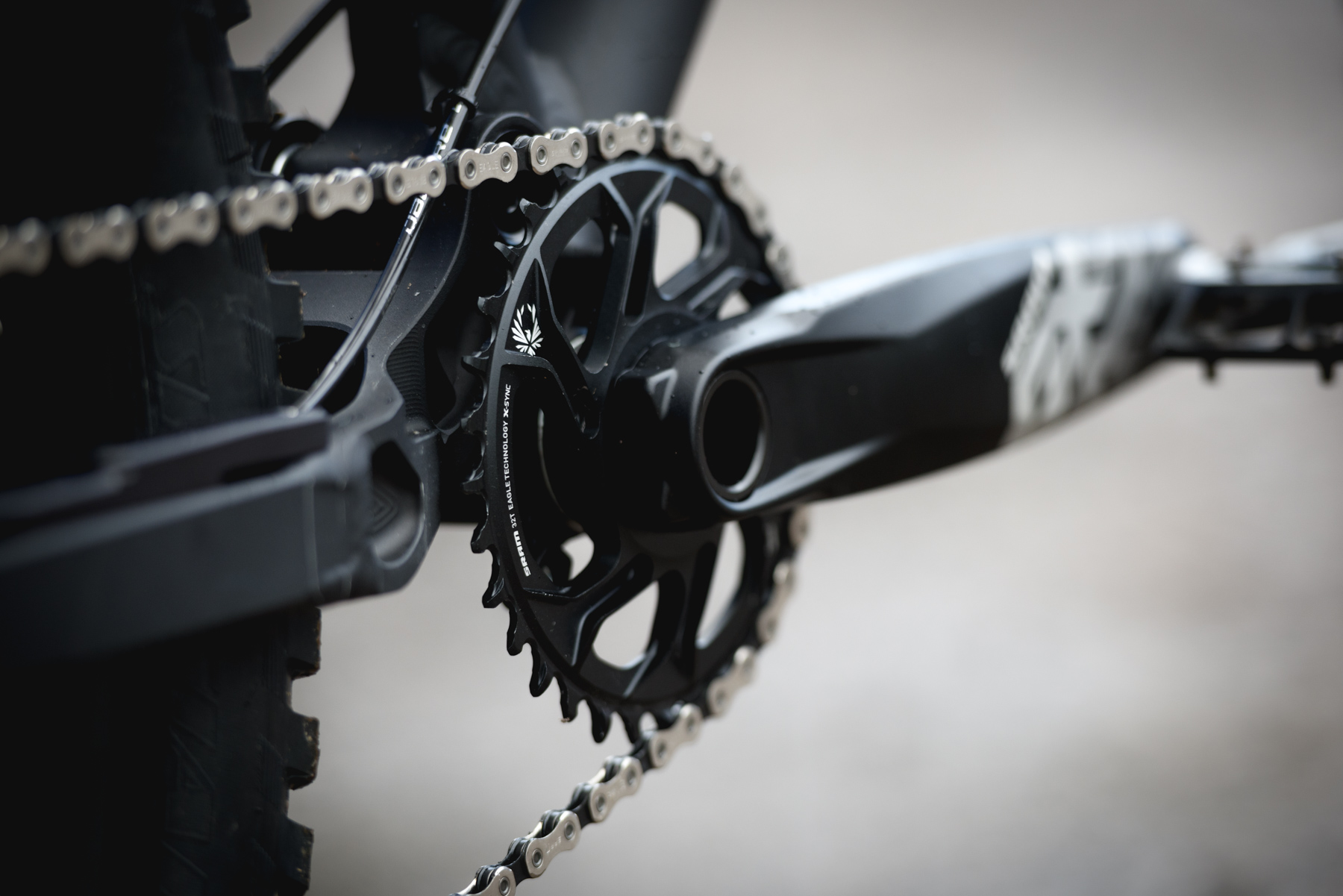
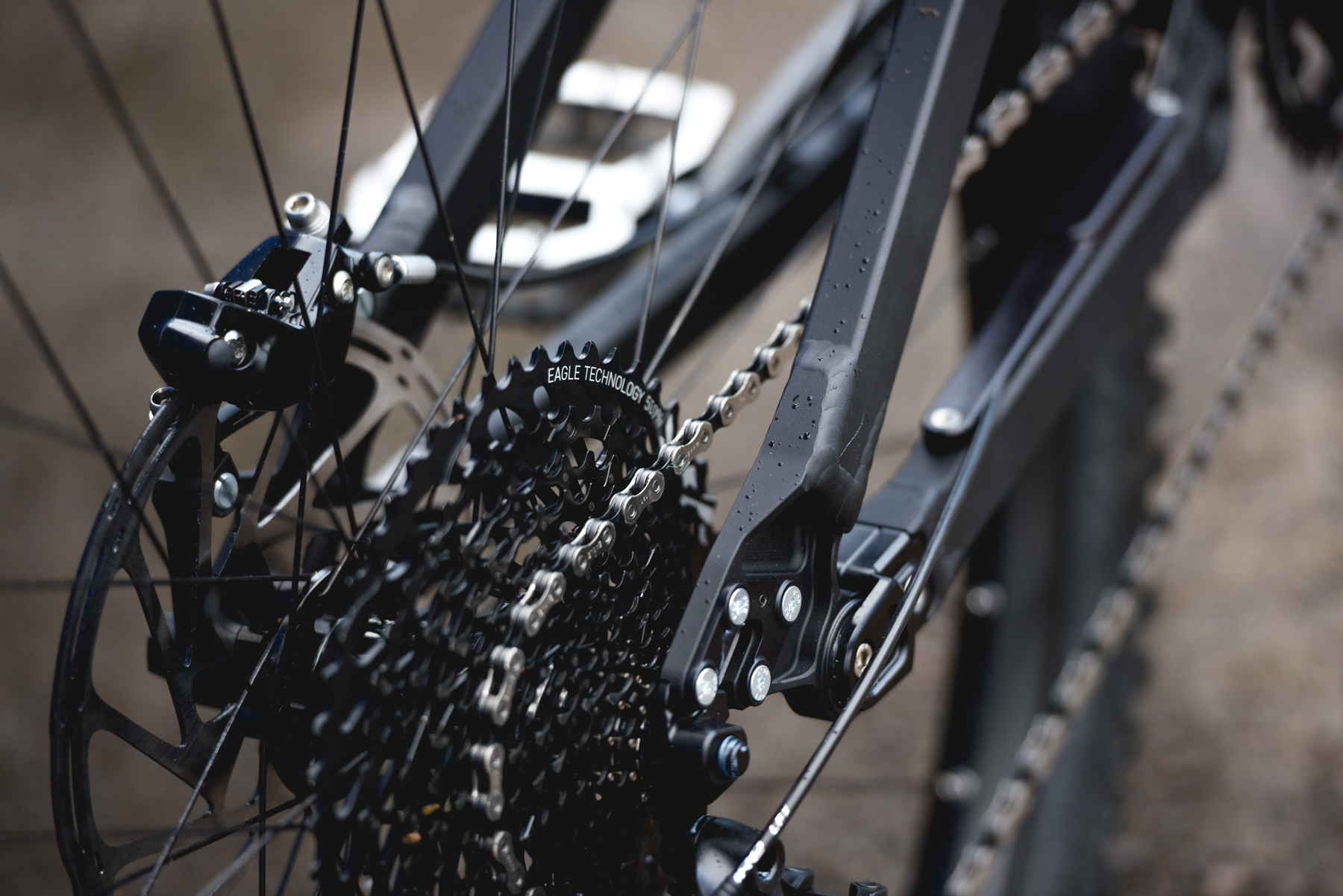
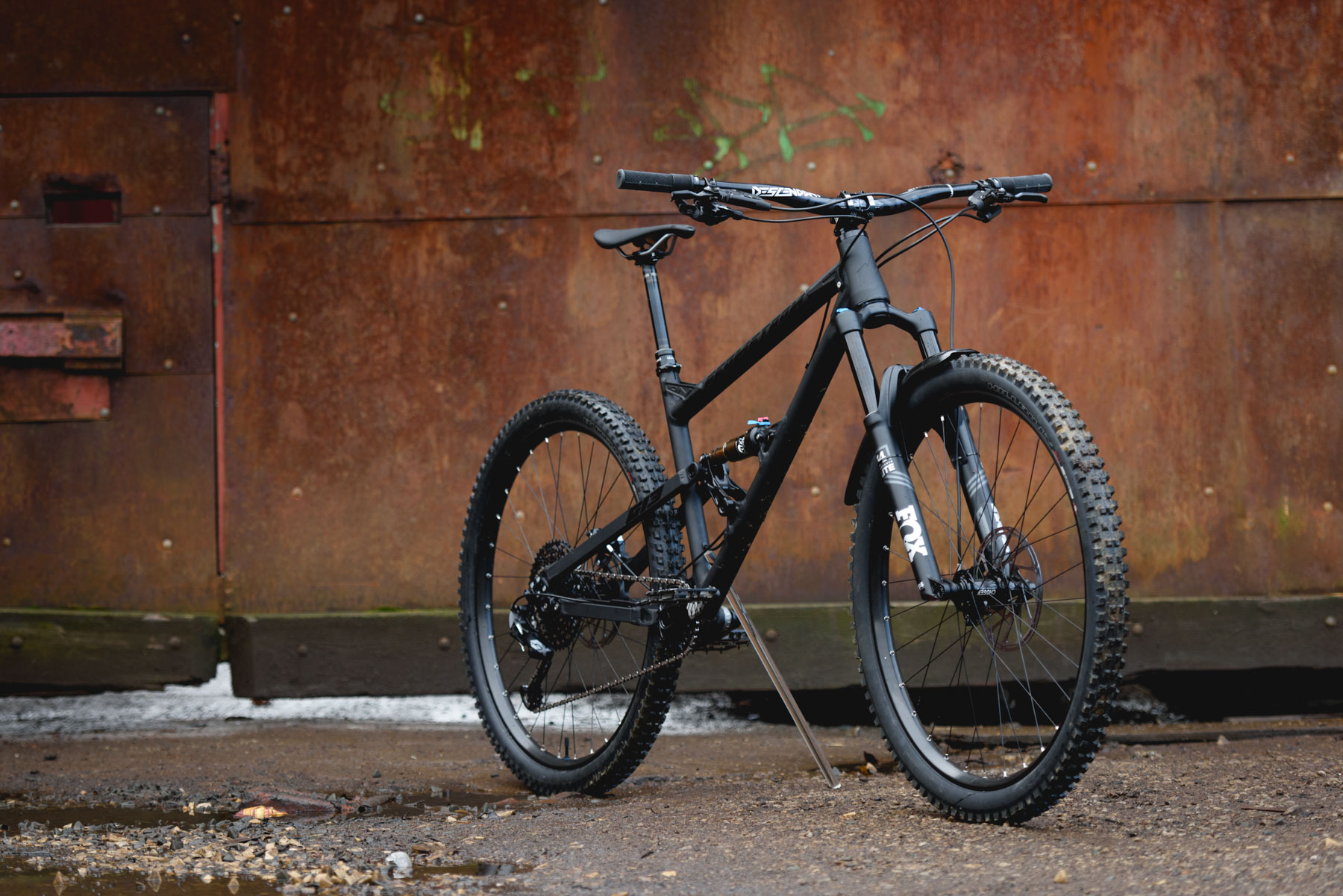

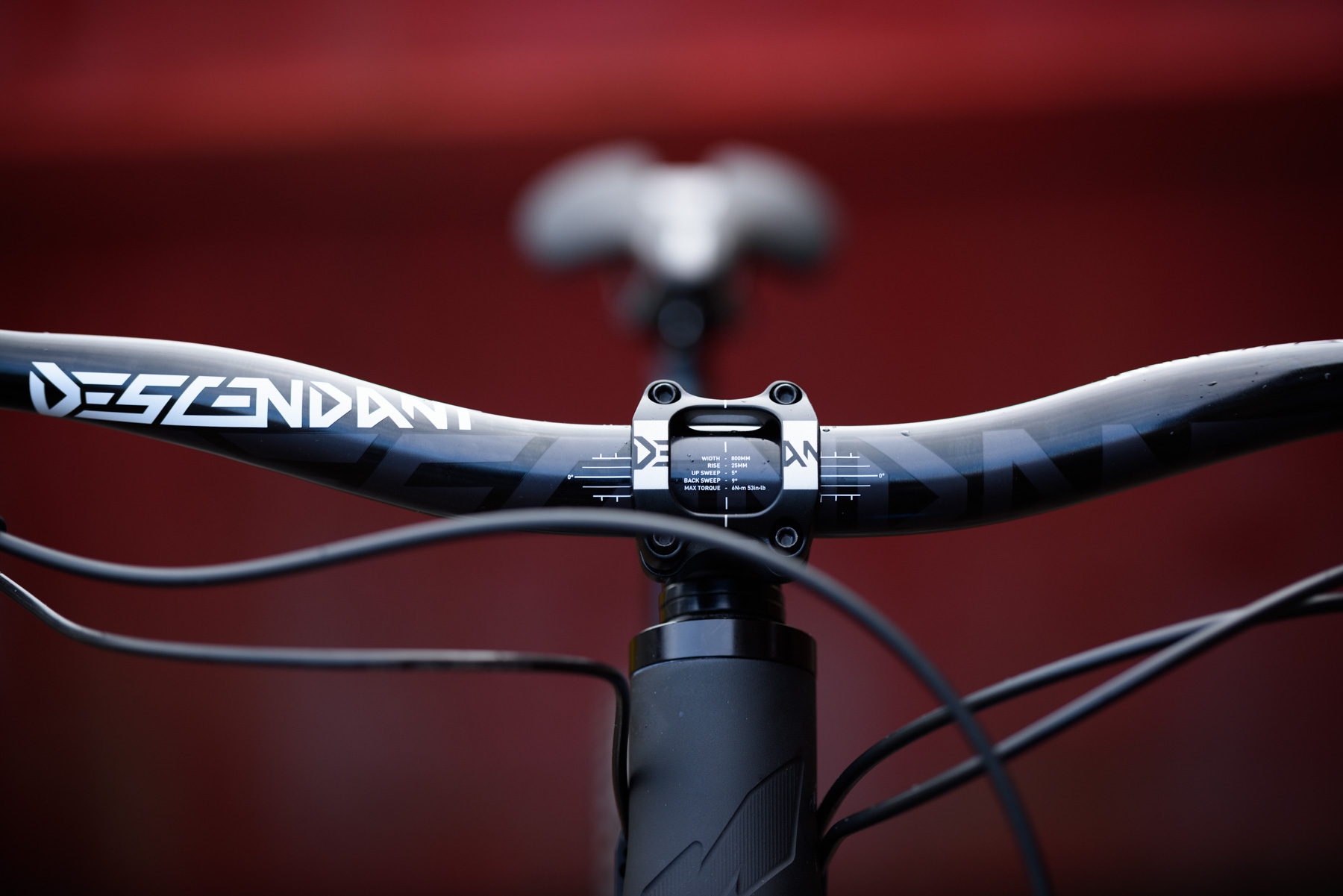

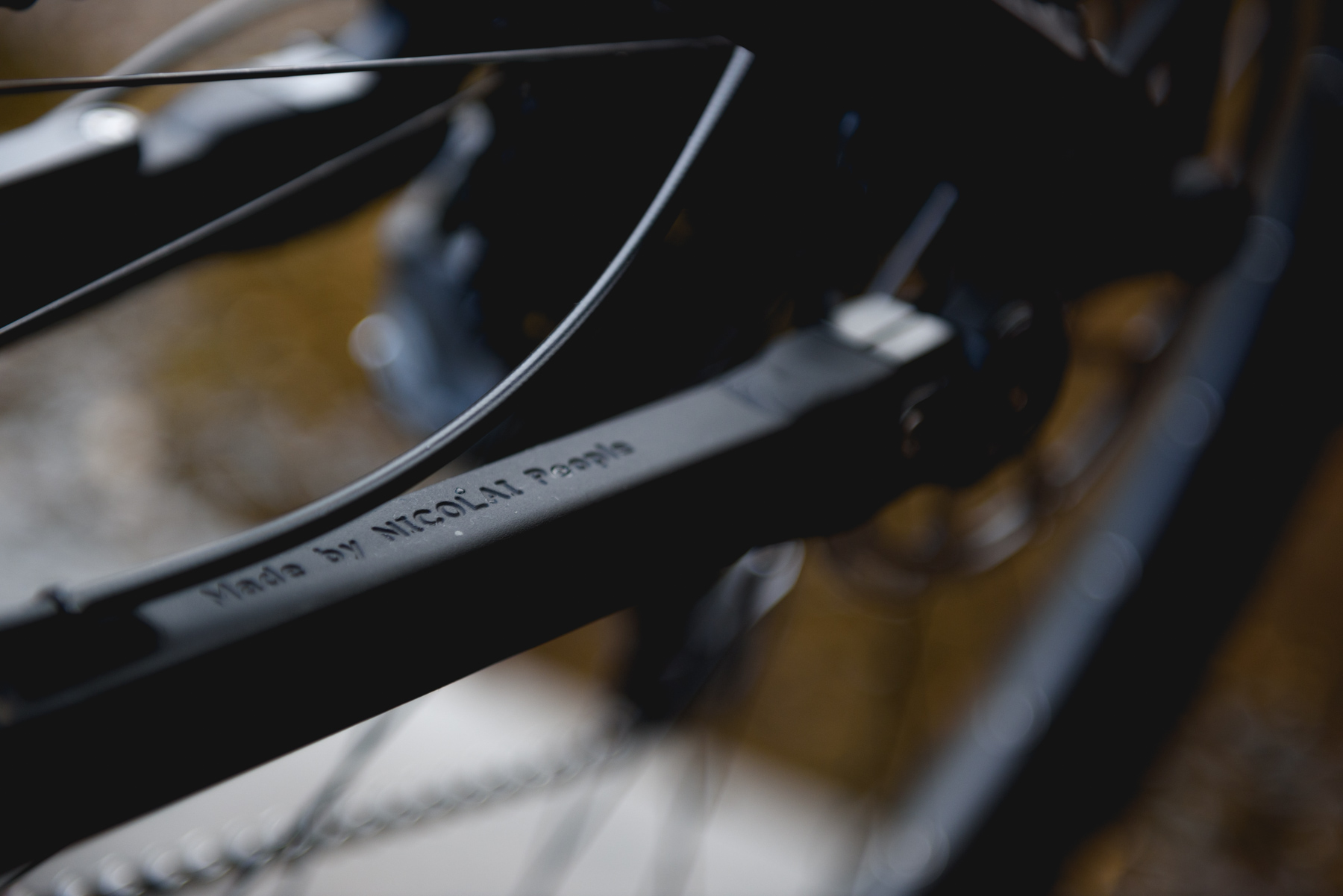

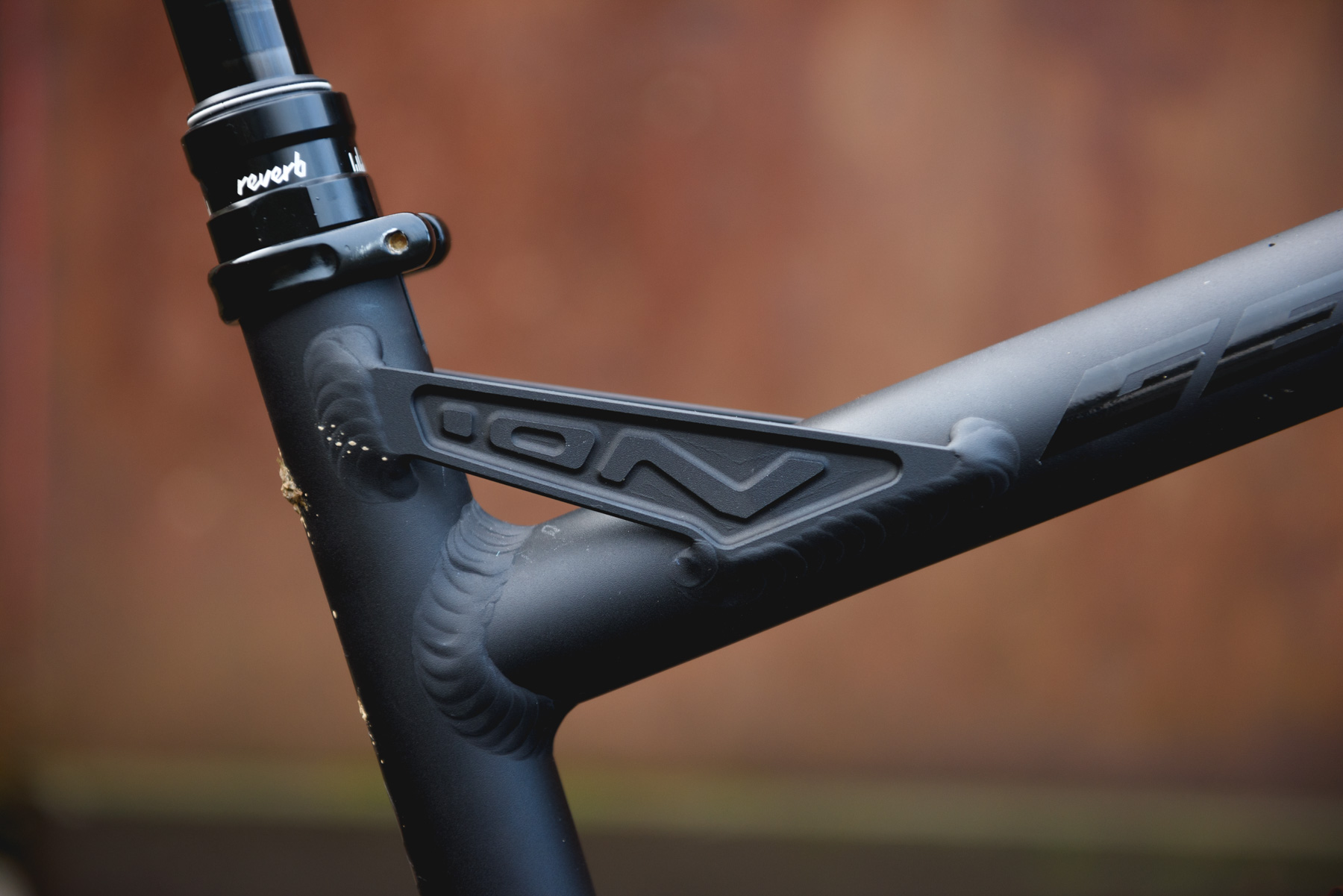

There are still a few things I’d like to tweak, play with and change but for me that’s part of the fun of building up your own bike. Fit and forget is for other people, test and tinker is what gets me going.
Fellow snapper Roo Fowler, also of this parish, had a G13 as a long long-term test bike and came to some interesting conclusions.
And yes, the tyre logos aren’t aligned with the valves, they came like that and as they were the last part of the bike to arrive they got fitted regardless so I could just get out and ride!




